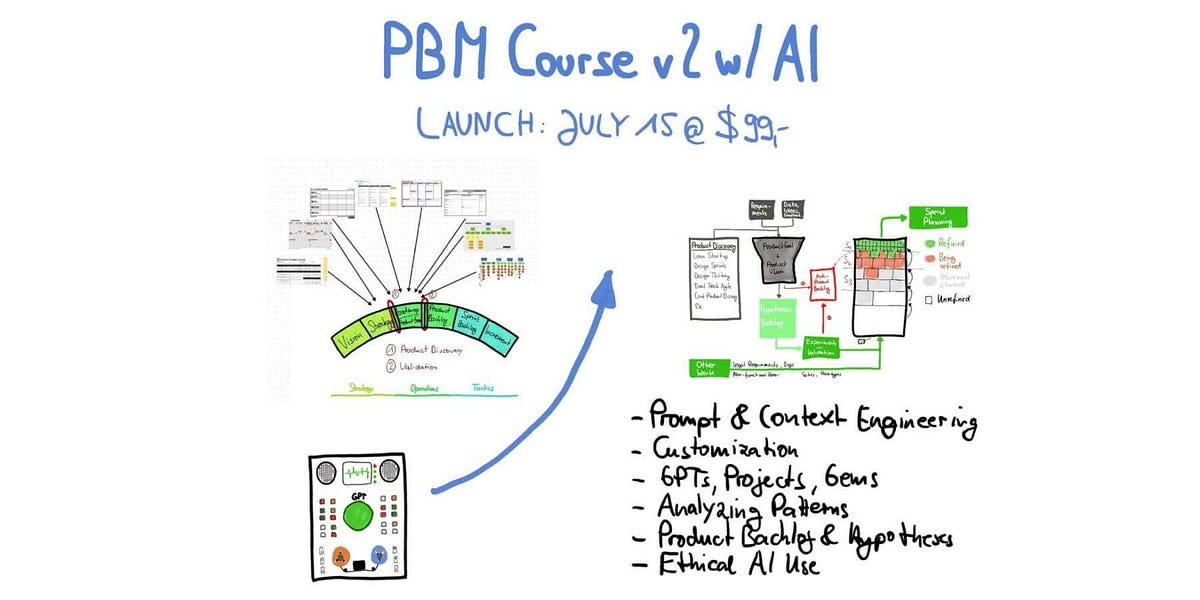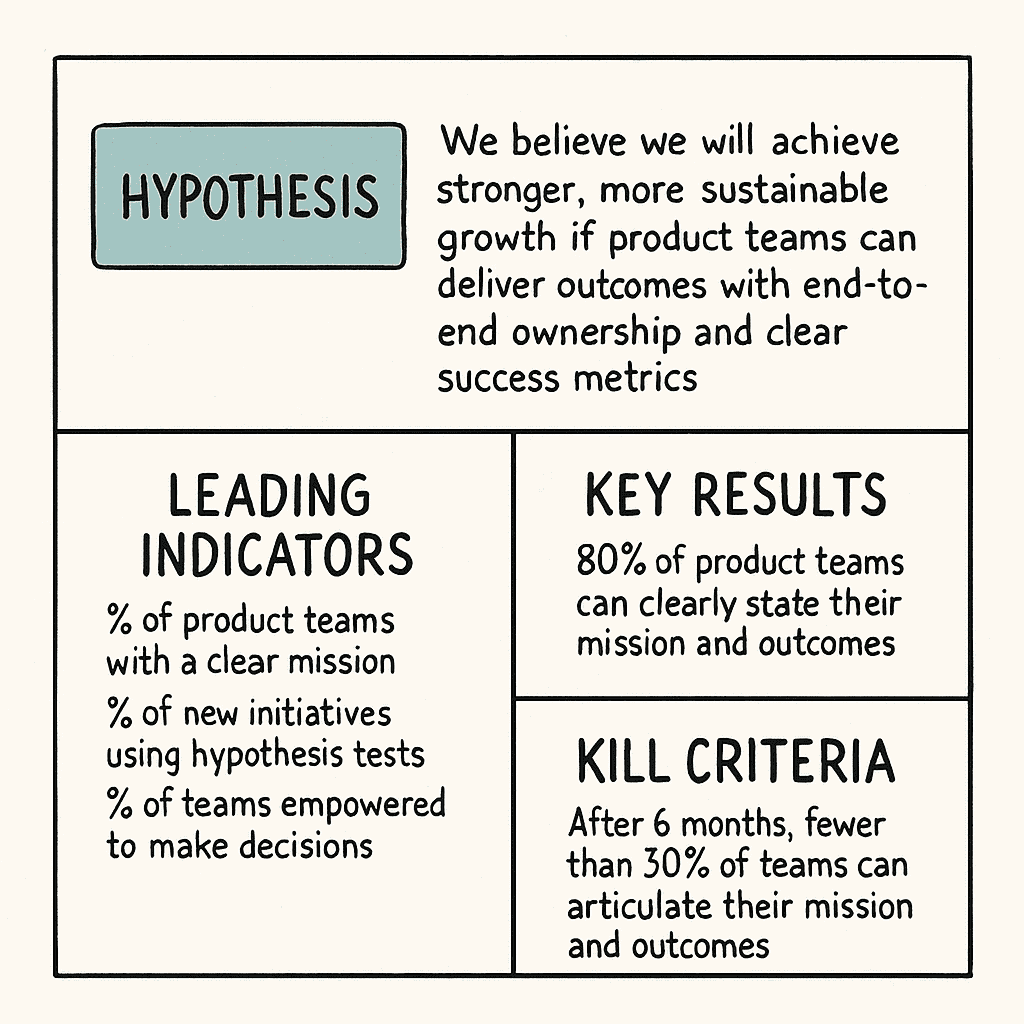Agile Methodology News
Scrum
337

Image Credit: Scrum
User Focused User Stories
- The article emphasizes the importance of having user-focused backlogs in product management.
- User Personas are detailed representations of users' characteristics including goals, pain points, and behavior patterns.
- User Role Modeling categorizes different users who interact with the product, such as primary users, secondary users, admin roles, and external actors.
- User Personas and User Role Modeling work together to help teams write better user stories, prioritize backlog items, and facilitate more meaningful Sprint Reviews.
Read Full Article
20 Likes
Medium
36

Image Credit: Medium
Why Big Companies Fail at Failing
- In early-stage startups, failure is seen as a survival strategy where bad ideas are killed early to focus on the right ones.
- In contrast, in large corporations, failure is often treated as shameful, leading to time and resources being wasted on the wrong projects.
- Successful companies should be able to pivot and change course based on new information, as opposed to just focusing on delivering something.
- It's emphasized that positive failure is a necessity as it allows for quicker identification of what works and protects resources and people from wasted time and energy.
Read Full Article
2 Likes
Medium
32

Image Credit: Medium
Map Your Way to Product Delight: A Practical Guide to User Story Mapping.
- User story mapping is a visual exercise that helps product managers and development teams understand user journeys and prioritize work for delightful experiences.
- Jeff Patton pioneered the user story mapping technique, visualizing user interactions with a product and guiding teams sprint by sprint.
- A flat backlog makes it hard to prioritize features and see the big picture, leading to chaos. User story mapping solves this issue by creating holistic views.
- The process involves identifying user personas, defining goals or activities, and prioritizing tasks based on importance and user perspective.
Read Full Article
1 Like
Alvinashcraft
21

Dew Drop – July 14, 2025 (#4458)
- Top tech news highlights from various domains including AI, development, design, and more.
- Topics cover validation in Windows apps, Commodore's return, React libraries, and WinUI updates.
- Insights on Azure Functions, GitHub actions, agile methodology, AI tools, podcasts, and community events.
Read Full Article
1 Like
Discover more
- Programming News
- Software News
- Web Design
- Devops News
- Open Source News
- Databases
- Cloud News
- Product Management News
- Operating Systems News
- Computer Engineering
- Startup News
- Cryptocurrency News
- Technology News
- Blockchain News
- Data Science News
- AR News
- Apple News
- Cyber Security News
- Leadership News
- Gaming News
- Automobiles News
Medium
194

Image Credit: Medium
The Advanced Product Backlog Management Course v2 with AI
- The Advanced Product Backlog Management Course v2 with AI focuses on distinguishing valuable AI applications from distractions in Product Backlog management.
- The course, set to launch on July 15, provides practical insights using HealthXYZ startup scenario and aims at enhancing AI proficiency in product management.
- It integrates generative AI not just for compliance but as a tool to improve design and ideas, and is designed to evolve into a complete Product Operating Model course.
- The course offers frameworks and AI-enhanced workflows that save time for Product Owners, improving stakeholder trust, and costs $99 with sign-up until July 22, 2025.
Read Full Article
11 Likes
Scrum
331

Image Credit: Scrum
The Irony of Managing a An Agile Product Operating Model Transformation like a Project
- Consultancies often recommend managing transformations like a project rather than as a product, focusing on vanity metrics over product metrics.
- Change agents driving a product operating model should emphasize behavior change and measurable customer outcomes.
- Key indicators for success include clear product missions, hypothesis prioritization, and empowerment of product teams.
- Treating a product operating model transformation as a product initiative can lead to stronger, more sustainable growth.
Read Full Article
19 Likes
Scrum-Master-Toolbox
101

Pascal Papathemelis: The Mobile Product Owner—Why Great POs Move Around and Talk to People
- Great Product Owners are described as excellent communicators who have the courage to confront stakeholders when necessary.
- They maintain a clear vision, break down products into manageable items, excel at backlog management, and value feedback.
- Challenges arise with Product Owners who dominate meetings, blur boundaries between product decisions and management, and resist communication or coaching support.
- It's crucial to help Product Owners develop communication skills and create safe environments for collaboration to thrive.
Read Full Article
6 Likes
Scrum
88

Image Credit: Scrum
Slicing & Splitting User Stories
- Decomposition in Scrum involves breaking down large Product Backlog Items into smaller, manageable pieces that can be completed within a Sprint.
- Two common techniques for decomposition are splitting and slicing, each serving a different purpose.
- Splitting involves breaking a large item into smaller chunks that are still meaningful on their own, like dividing a pizza into slices.
- Slicing focuses on delivering a thin slice of end-to-end value, similar to cutting a layered cake vertically, allowing for incrementally building user value.
Read Full Article
5 Likes
Scrum
329

Image Credit: Scrum
Rethinking legacy: when Scrum makes old practices obsolete
- Scrum encourages reevaluating legacy practices to determine their continued value and relevance.
- Scrum can reveal practices that are no longer effective or necessary through its emphasis on transparency.
- Teams are encouraged to evaluate existing practices during Scrum Events and decide if they add value or hinder progress.
- The goal of Scrum is not minimalism but ensuring practices are simplified and fit for purpose based on team context.
Read Full Article
19 Likes
Alvinashcraft
258

Dew Drop – July 10, 2025 (#4456)
- Microsoft's .NET MAUI Team leverages GitHub Copilot for enhanced productivity.
- A new Microsoft Learn Plan has been announced to prepare for organizations' AI workloads.
- Uno Platform introduces a new lightweight DataGrid.
- Discover India's Top Hotel Brands using .NET MAUI Lollipop Charts.
Read Full Article
15 Likes
Medium
101

Image Credit: Medium
Is Agile Really Dead? The Future of Software Development Beyond the Dogma
- Agile, once a challenger to traditional software methodologies, is now criticized for becoming bloated and bureaucratic.
- Some argue that Agile has devolved into a mere theater of rituals without meaningful outcomes.
- The core issue is not Agile itself but how it's been adopted and misunderstood, leading to failed implementations.
- The future of software development lies in a renewed, principle-driven agility that retains its revolutionary spirit but adapts to modern realities.
Read Full Article
6 Likes
Scrum-Master-Toolbox
210

Pascal Papathemelis: Selecting the Appropriate Agile Values for Organizational Impact
- Pascal Papathemelis emphasizes 'effectiveness over efficiency,' 'outcome over output,' and 'creating value for the customer' as key for Scrum Masters' success.
- He focuses on understanding value for the organization and end customers while minimizing confusion in the process, emphasizing work sustainability through Agile values and principles.
- Pascal customizes Agile Manifesto's values for organizations, highlighting principles like focusing on customer value, collaboration, and constant learning to address challenges effectively.
- He recommends the sailboat retrospective format as a valuable tool for teams to discuss their work aspects from different perspectives, among other retrospective methods.
Read Full Article
12 Likes
Alvinashcraft
363

Dew Drop – July 9, 2025 (#4455)
- Introducing Docker Hub MCP Server: new way to discover, inspect, manage container images.
- Announcing TypeScript 5.9 Beta, behind the scenes of .NET 10 preview.
- Simplify .NET Development with Aspire, build interactive chat UIs in React.
- React Router new governance, Visual Studio 2022 update, functional programming in C#.
- Build responsive Flutter dashboard, stop using Flux pattern for every Blazor app.
Read Full Article
21 Likes
Scrum-Master-Toolbox
369

Pascal Papathemelis: From Waterfall to Agile—A Multi-Level Change Strategy
- Pascal Papathemelis collaborated with a fellow coach to successfully lead an agile transformation in a large organization with a waterfall history and heavy documentation-driven processes.
- Using the Cynefin framework, they conducted workshops to introduce Agile vocabulary and concepts to the organization across different levels - IT, business, and management.
- The coaches operated at multiple levels, working strategically with leadership, mentoring teams, demonstrating Scrum Master roles, and supporting Product Owners in understanding their responsibilities.
- Pascal focuses on human factors, outcomes, effectiveness, flow, decision-making, clarity, and continuous improvement in his coaching approach.
Read Full Article
22 Likes
Dev
86

Image Credit: Dev
Agile and Accessibility: A Powerful Partnership
- Accessibility implemented later in the development cycle can slow down agile processes; it's essential to incorporate it from the beginning.
- Training staff in accessibility is crucial; options include hiring experts, online courses, or internal discussions with accessibility experts.
- Developing accessibility standards in a company can streamline the integration of accessibility into designs.
- Incorporating accessibility from the start ensures smoother product delivery and alignment among developers, product managers, and designers.
Read Full Article
5 Likes
For uninterrupted reading, download the app